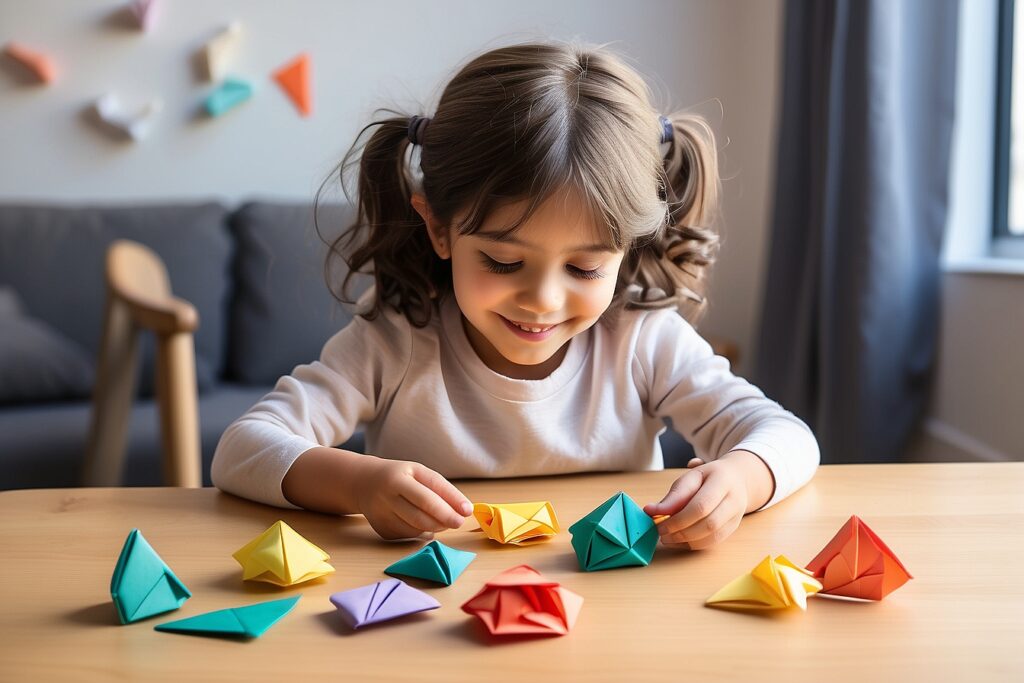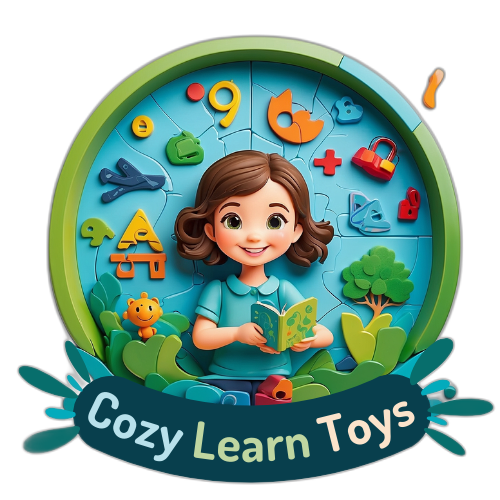Introduction to Origami and Educational Toys

Origami toys – the ancient Japanese art of paper folding, has a rich history dating back to the 6th century. This art form, which involves transforming a flat sheet of paper into a sculpture through folding and sculpting techniques, has evolved over centuries and crossed cultural boundaries, becoming a beloved craft worldwide.
The impact of origami toys on child development is profound. Engaging in origami activities helps children enhance their fine motor skills, spatial reasoning, and concentration2. It also fosters creativity and problem-solving abilities as children navigate through the complexities of transforming a two-dimensional paper into a three-dimensional object.
Educational toys play a crucial role in child development. They stimulate cognitive development, encourage interactive play, and help children understand the world around them. Origami, as an educational toy, combines the joy of play with the benefits of learning, making it a valuable tool in child development.
The Art of Making Origami Fidget Toys

Creating origami fidget toys is a fun and rewarding process that combines art, craft, and mindfulness. Here’s a simple step-by-step guide to making your own origami fidget toy:
Step 1: Start with a square piece of paper. If you’re using a paper with one colored side, place the colored side facing down.
Step 2: Fold the paper in half diagonally, creating a triangle. Open it back up and fold it diagonally the other way. You should have two intersecting creases forming an ‘X’.
Step 3: Fold the paper in half, aligning the edges. Open it up and fold it in half the other way. You should now have a ‘+’ intersecting the ‘X’.
Step 4: Push the sides towards the center along the creases, forming a smaller square.
Step 5: Fold the corners of the square into the center. Flip the model over and repeat.
Step 6: Fold the edges into the center, flip the model over, and repeat. You should now have a smaller square.
Step 7: Unfold the last set of folds, lift the flaps, and tuck the corners into the pockets created. This forms the base of your fidget toy.
Remember, safety is paramount when crafting. Always supervise children when they are using scissors or other sharp tools. Crafting should be a fun and safe activity for everyone.
Learning Through Origami
Origami is not just an art; it’s a learning tool with numerous cognitive benefits. It engages multiple parts of the brain and can help improve skills such as spatial visualization, sequencing, attention to detail, patience, and fine motor skills.
Origami can significantly enhance creativity and learning. The process of transforming a flat piece of paper into a three-dimensional model requires a certain level of creativity and imagination. It encourages children to think outside the box and come up with innovative solutions. Moreover, origami can be used to teach various academic concepts, including geometry, fractions, and symmetry, making learning interactive and fun.
Using Origami Fidget Toys as an Educational Tool
Origami fidget toys can be an excellent educational tool when incorporated into learning activities. They can be used to teach various concepts, including geometry, symmetry, and fractions. For instance, folding an origami model can demonstrate the concept of halves and quarters, while creating symmetrical origami models can help children understand the concept of symmetry.
Here are some tips for parents and educators:
- Start Simple: Begin with simple models and gradually introduce more complex ones as children become more comfortable with the folding techniques.
- Incorporate into Lessons: Use origami models to illustrate academic concepts. For example, an origami bird can be used in a lesson about animals or habitats.
- Encourage Creativity: Allow children to experiment with different colors and types of paper. This encourages creativity and allows children to personalize their creations.
- Patience is Key: Remember, origami requires patience and practice. Encourage children to try again if they don’t succeed at first.
Conclusion: The Future of Educational Toys
The future of educational toys is bright, and origami is poised to play a significant role in it. As an art form that combines creativity, problem-solving, and hands-on learning, origami offers a unique blend of entertainment and education. It’s a versatile tool that can be adapted to various learning styles and subjects, making it a valuable addition to any educational toolkit.
The exploration of educational crafts like origami is not just a trend; it’s a movement towards more interactive and engaging learning methods. As we move forward, the integration of such crafts into mainstream education will continue to grow, offering children a more holistic and enjoyable learning experience.
So, whether you’re a parent, an educator, or simply someone interested in the intersection of art and education, I encourage you to explore the world of origami. Who knows? You might just fold your way into a new understanding of learning.
